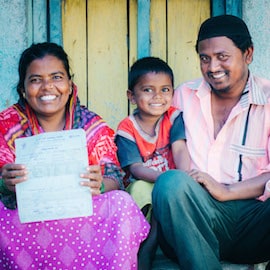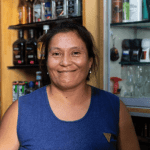Through Social Investing, Asia’s ‘On a Journey to Help it Help Itself’
With the increasing maturity of the development sector, and with more and more Asian homegrown players and the majority of countries actively developing their social agenda, there is a real need for organizations like AVPN (the Asian Venture Philanthropy Network) and its annual conference, held June 7-9 in Bangkok, to drive collaboration and accelerate change.
“Asia’s top social investment event” attracted representatives of 32 countries, including 18 Asian ones, reflecting the reality that activity is taking off across the region. It seemed fitting that the conference centered on collaboration, which is more essential than ever to reduce the repetition of mistakes, have global insight adapted locally, build great networks between countries and stakeholders, and ensure there is a progressive and suitable continuum of funding.
Among the 700-plus delegates were representatives from international funders, network organizations, impact funds, academia, corporates, incubators and a few media. The mix of 44 sessions included everything from calls for immediate action – pitch sessions from social organizations, discussions on funding challenges and corporate engagement best practices – to longer-term discussions about things like market system innovation, ecosystem building, the role of technology and the continuum of social investing.
Industry transformation
In one of the best long-range sessions, led by Harvey Koh of FSG and Anna Brown of Rockefeller Foundation, on market system innovations, attendees were introduced to “the practice of supporting and harnessing innovations across multiple sectors leading to systemic changes that reshape markets and advance more inclusive economies.” This challenged the past practice of “we change the system” to the proposed approach of “we support the system to change toward inclusion.” The Amul story (a milk cooperative movement that transformed India’s milk industry and the lives of small farmers) was used to demonstrate the theory. It was fascinating, but also acknowledged that thinking in a 70-year time frame can be challenging, and it takes an evolved funder (such as Rockefeller) to lead such change. The power of the session was enhanced by the fact that the table groups were made up of foundation heads, managing directors of consultancies and in-depth practitioners who all brought their expertise to the discussion. (The final report is expected late July at FSG’s website.)
While there was a full conference program, the opportunity for side meetings with “friends and future friends” were of equal importance (the online AVPN connector provides effective support for this). These meetings are the source of new partnerships, funding agreements, international networking and the general knowledge transfer that is essential to reducing “system friction” and accelerating change. I personally witnessed a new Hong Kong foundation head meeting established U.S. foundation leaders to accelerate their learning; UK technology advocates connecting with Indian technology enablers, and Japanese innovators, who are working in a very nascent market, learning how to engage and navigate government agencies from other Asian practitioners.
As a gathering of funders and resource providers, impact investing had its part to play at the conference; about 15 percent of the sessions were related to the topic and, in fact, the trend that came through was of a further move toward blended finance (a continuum of finance). Roopa Kudva of Omidyar Network discussed how traditional forms of philanthropy are being replaced in India by a more market-based solutions approach (also see the Livemint article) while Abhilash Mudaliar of GIIN wants to “see impact investing as the new norm.” And Charly Kleissner of Toniic shared having seen the value of impact investing – as part of the blend of finance – improve an organization’s performance. One challenge identified was the “need to ensure the on-ramp for institutional investors is right.”
Platforms created
Many sessions created platforms for local and global leaders to share their knowledge and often reveal resources for the attendees. For instance, Sally Uren, CEO of Forum for the Future, directed attendees to the six stages in their “how to for system innovation.” In another session, the Dasra report “Plugged in” was shared to help social businesses make technology choices.
Other session highlights: To deliver quality education for all, we have “got to have vision and to create space to have the conversation with the families, kids and practitioners” (Wendy Kopp at Teach for All); there are “three barriers to technology in the development sector: 1) The need for money for technology 2) The need to appeal to technology graduates 3) Leaders need technology in their strategy” (Willson Cuaca of East Ventures); and “ecosystem builders need to challenge ourselves to find the UNusual suspects” (Alix Zwane of Global Innovation Fund).
Some of the softer successes and trends of the event included the unifying nature of English to bring 32 countries together; the actual 50/50 gender mix that meant the best ideas of both sexes were being included; and the inclusion of government, private- and third-sector representatives to ensure the broadest possible discussion.
Indicative of the sector maturing across Asia is the ever-greater volume of information; for instance, AVPN published its two-volume “Social Investment Landscape in Asia” research, which is a solid start for people looking to understand new (and maybe their own) markets including the players, issues and opportunities.
All in all, the event is an essential part of the Asian journey to help it help itself.
John-Paul Hamilton has led the funding and collaboration team at Dasra for more than two years.
Photos from the AVPN annual conference, courtesy of AVPN
- Categories
- Investing, Social Enterprise



